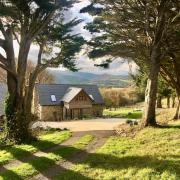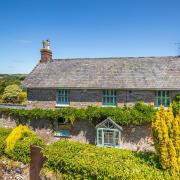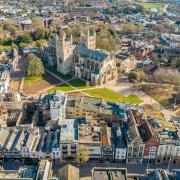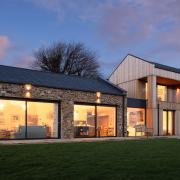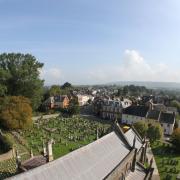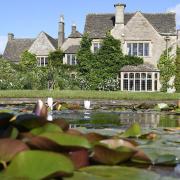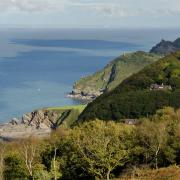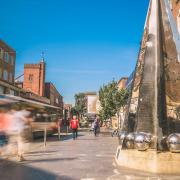Exmoor’s leading tourist attractions, from the tumbling streams of Watersmeet to the heights of Countisbury Hill, need little introduction. Here PHILIP DALLING, an explorer of lesser-known treasures, offers an alternative top ten of the moor’s hidden gems
1 Blackpitts homestead, the only habitation on the road between Lynton and Simonsbath, is a beacon of domesticity amidst enveloping wilderness. It exists because of the sheep which graze the peaceful hillsides around, although one of its two structures is a product of war.
A herding was created in 1916 and Blackpitts Barn is a 1914-18 War military building. The adjacent bungalow, suburban in appearance and looking lost amidst moorland grandeur, dates from 1950, built to accommodate a shepherd.
2 A few yards further towards Simonsbath the road crosses a tiny watercourse and a steep footpath climbs to Exe Head, almost 1,500 feet above sea level. Does this tiny trickle of peaty water really become the major river that in 60 miles washes the historic quays of Exeter? Challacombe village is the gateway to moorland splendour and archaeological riches, reached by a bridle path which leads to Martinhoe Cross on the A39 Blackmoor Gate to Lynton road.
3 The path climbs to Homer Common, where a walker’s feet are on land once part of the medieval manor of Radworthy. The earthly remains of much earlier inhabitants lie all around in the Bronze Age burial chambers known as Chapman Barrows, where legend suggested the barrows were guarded by dragons.
4 Nearby is Exmoor’s tallest standing stone, the Longstone, a nine foot high slab of local slate quarried from the nearby . . .
5 Swinscombe or Pixy Rocks. The stone, weathered by both climate and by sheep rubbing against it, points to the burial chambers in one direction and to the source of the River Bray in another.
Superstitious residents in bygone days believed Pixy Rocks were inhabited by the little people.
6 Off the Challacombe to Simonsbath road, the reservoir known as Pinkery Pond was created by damming the headwaters of the River Barle, and was intended to supply a canal (never completed), designed to exploit Exmoor’s mineral wealth. Pinkery instead became noted as the scene of a lovesick farmer’s suicide.
7 Another poignant monument to human tragedy is Middleham Gardens, alongside the East Lyn River between Lynmouth and Watersmeet. The hamlet of Middleham was destroyed in the 1952 flood, with the loss of three lives. The site of the cottages is now a moving memorial garden.
Two widely separated Exmoor churches have much in common.
8 St Petrock’s, Parracombe, replaced in the late 19th century by a new church nearer the village, is a miraculous late 18th century survival in itself, but is particularly notable for the presence in the churchyard of a building (now a dwelling) that was once Parracombe Church Ale House. ‘Church ales’, revels with sports, plays and dancing, encouraged by a brew of strong ale made on the premises, were eventually banned by the puritan Oliver Cromwell.
9 St Mary’s Molland, mercifully neglected by 19th century restorers, has clear glass windows revealing a classic early Georgian interior, with box pews, three-decker pulpit and a prominent display of the Royal coat of arms and the Ten Commandments.
The churchyard here has no former ale house but, better still, the London Inn, serving Exmoor ales direct from the cask, is next door!
10 The remoteness of Parracombe, by-passed by the A39 road, has helped protect one of Exmoor’s most important archaeological and historical sites. Holwell Castle, built following the Norman conquest of 1066, occupies a commanding position overlooking the river crossing of the Heddon Water.
Best viewed from the height of the churchyard of Christ Church, Parracombe’s ‘new’ parish church, Holwell Castle was of classic motte and bailey construction.
Once the base from which much of Exmoor was ruled, its remaining earthworks are considered to be one of the best examples of a Norman earth and timber castle in South West England.
To find out more about what to see and where to visit on Exmoor call in to a National Park Visitor Centre or visit exmoor-nationalpark.gov.uk




